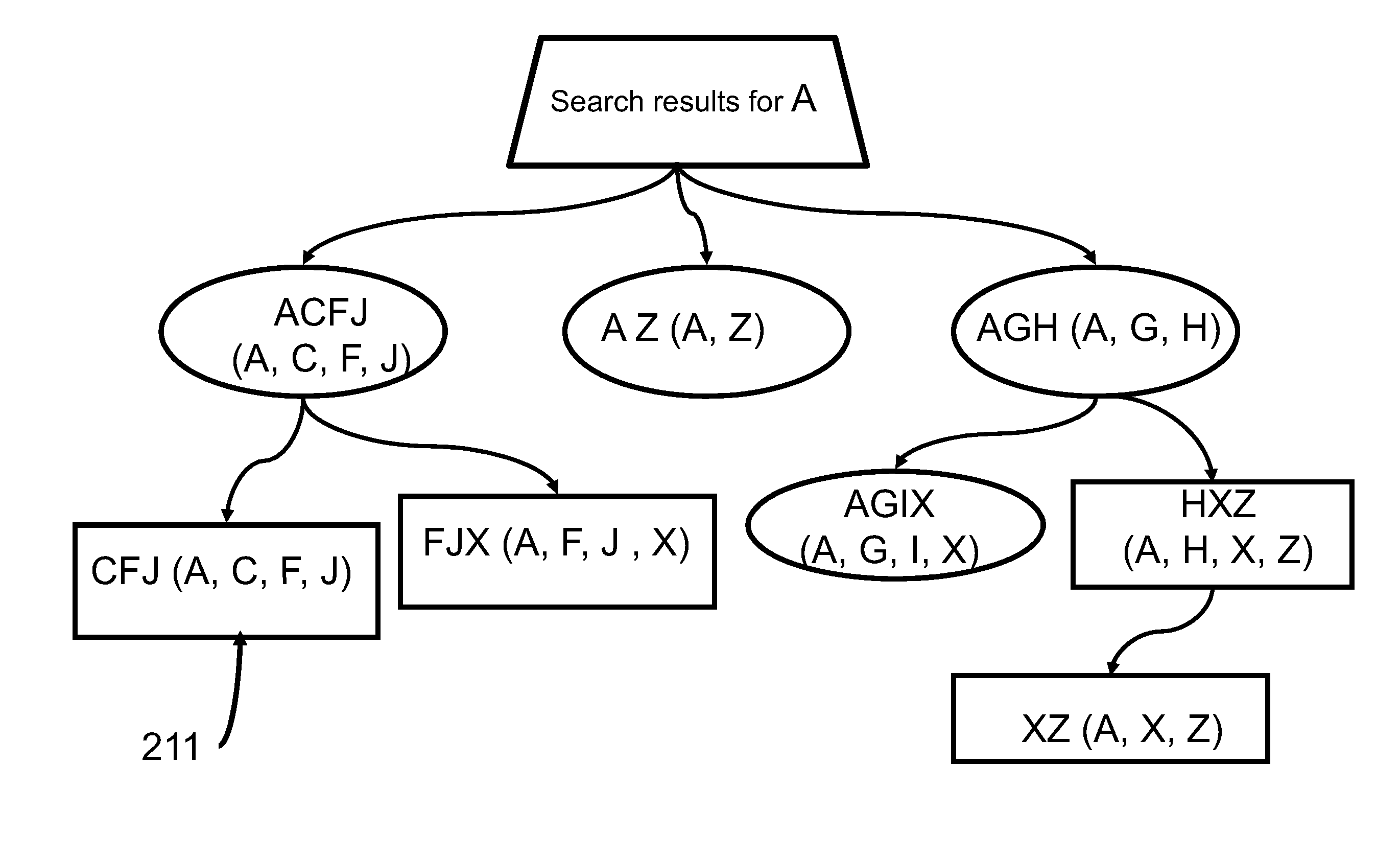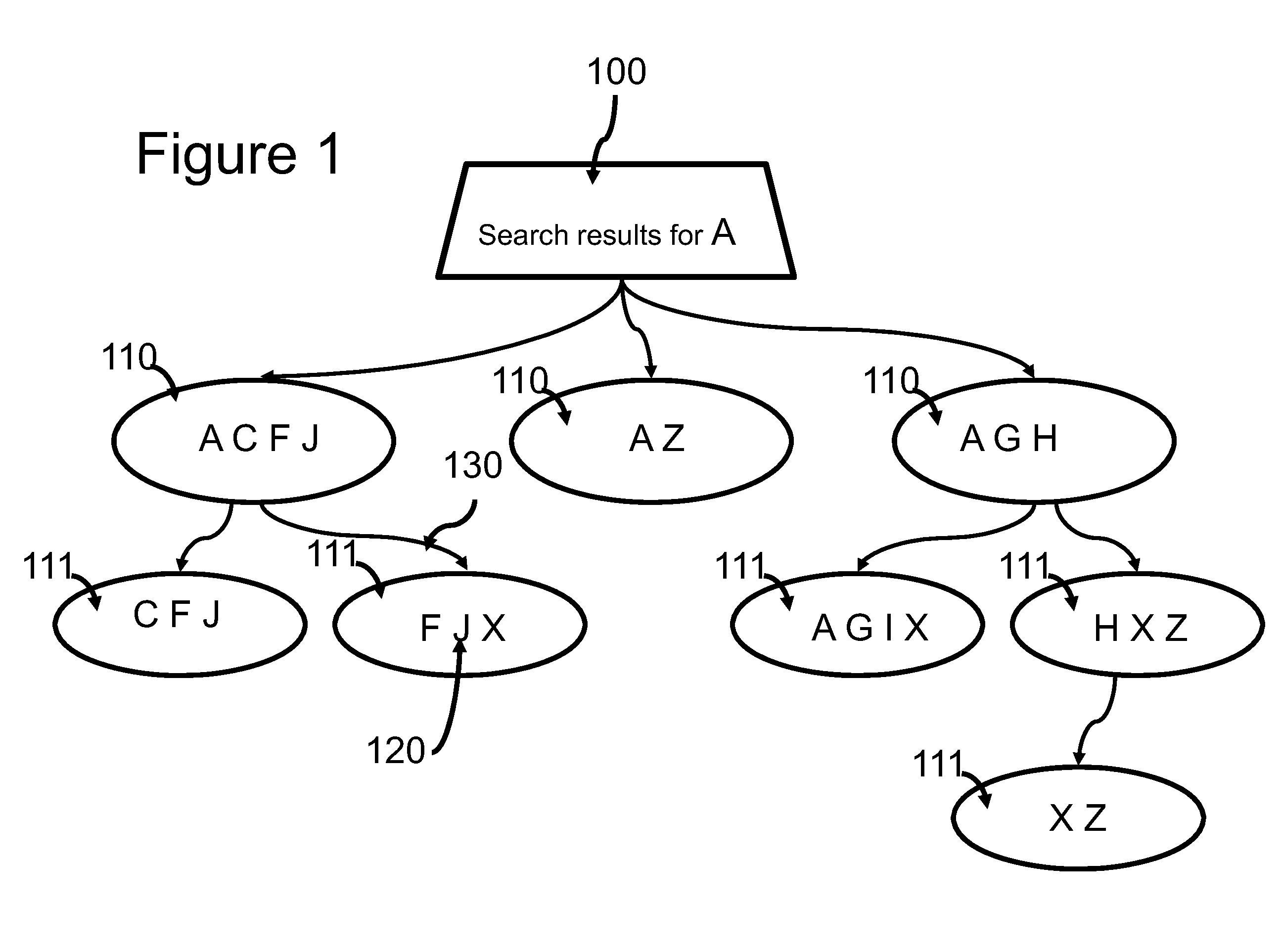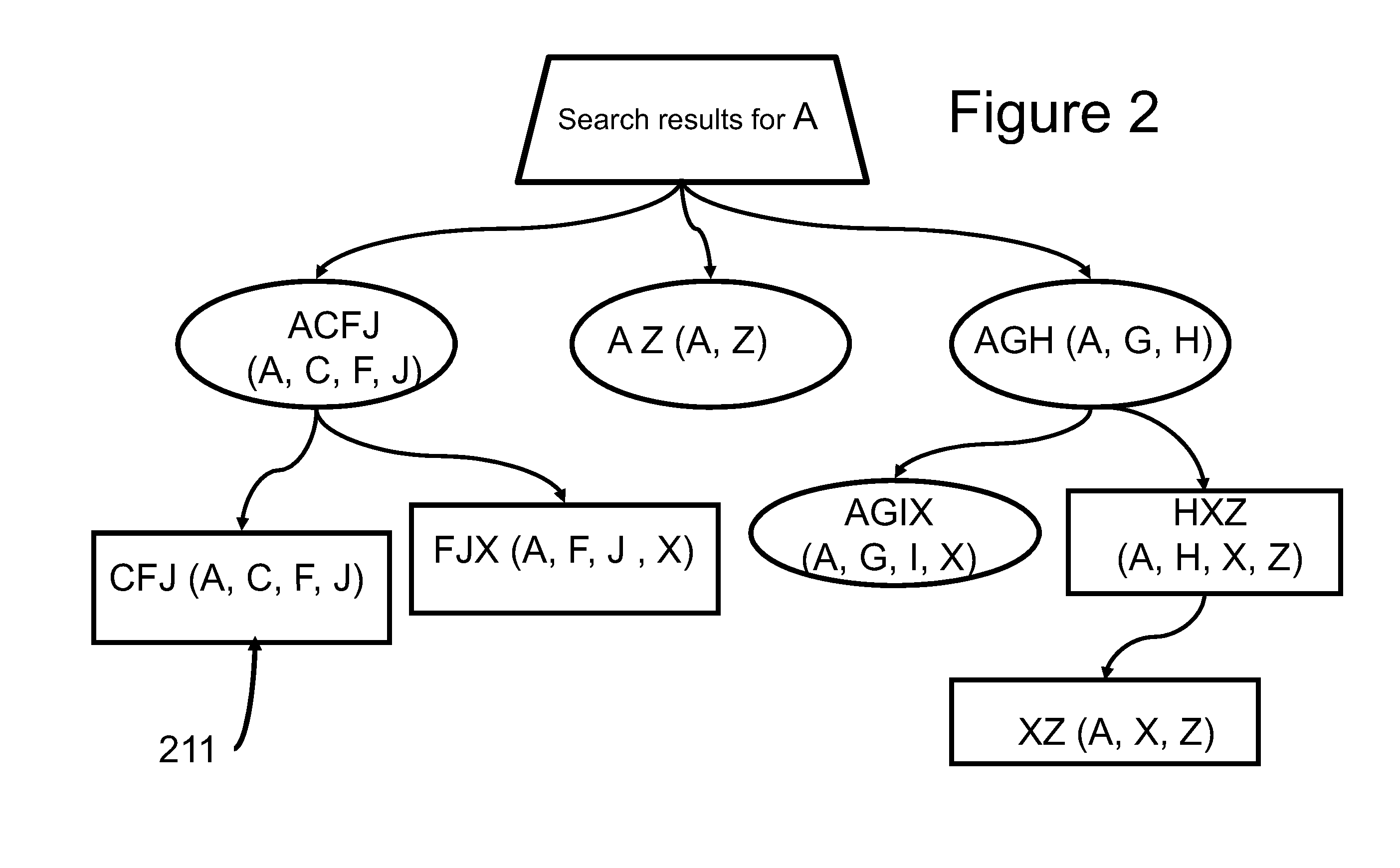Information retrieval using user-generated metadata
- Summary
- Abstract
- Description
- Claims
- Application Information
AI Technical Summary
Benefits of technology
Problems solved by technology
Method used
Image
Examples
Embodiment Construction
[0051]Aspects of the present invention utilize user-generated metadata to identify the documents selected for viewing by the user from among the documents presented by a search engine and the documents subsequently arrived at by the user through following links within the documents presented by the search engine. Aspects of the present invention, thus, provide improved recovery of documents that were previously arrived at by entering a search term, or a query, and selecting links from within the presented documents to other documents.
[0052]The improved recovery is obtained, in some aspects, by introducing synthetic terms or synthetic documents that tie together a group of documents that are related in some fashion or a group of related terms. As a result, and if the documents are tied together, for example, according to a certain time interval, later recovery of these documents responsive to a query such as “web pages I opened while reading this email,” becomes possible. Further, by...
PUM
 Login to View More
Login to View More Abstract
Description
Claims
Application Information
 Login to View More
Login to View More - R&D Engineer
- R&D Manager
- IP Professional
- Industry Leading Data Capabilities
- Powerful AI technology
- Patent DNA Extraction
Browse by: Latest US Patents, China's latest patents, Technical Efficacy Thesaurus, Application Domain, Technology Topic, Popular Technical Reports.
© 2024 PatSnap. All rights reserved.Legal|Privacy policy|Modern Slavery Act Transparency Statement|Sitemap|About US| Contact US: help@patsnap.com










